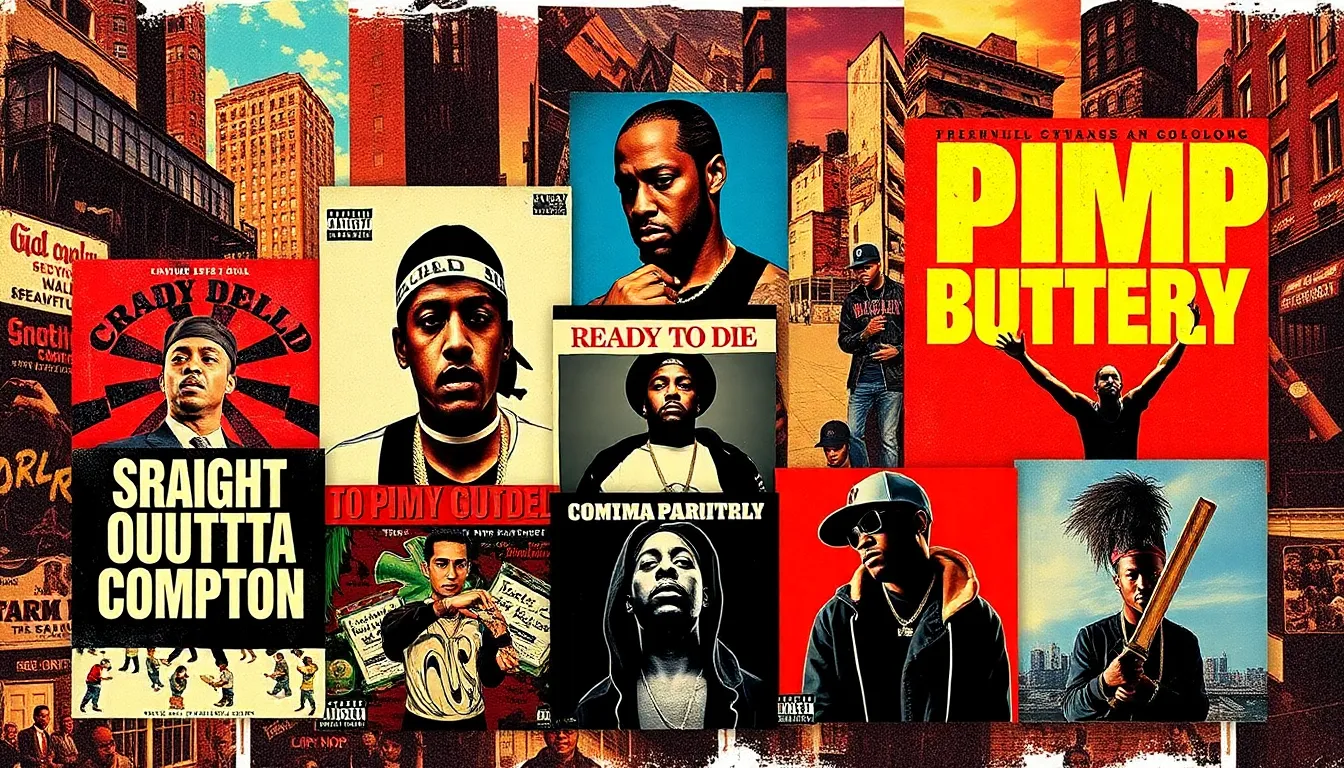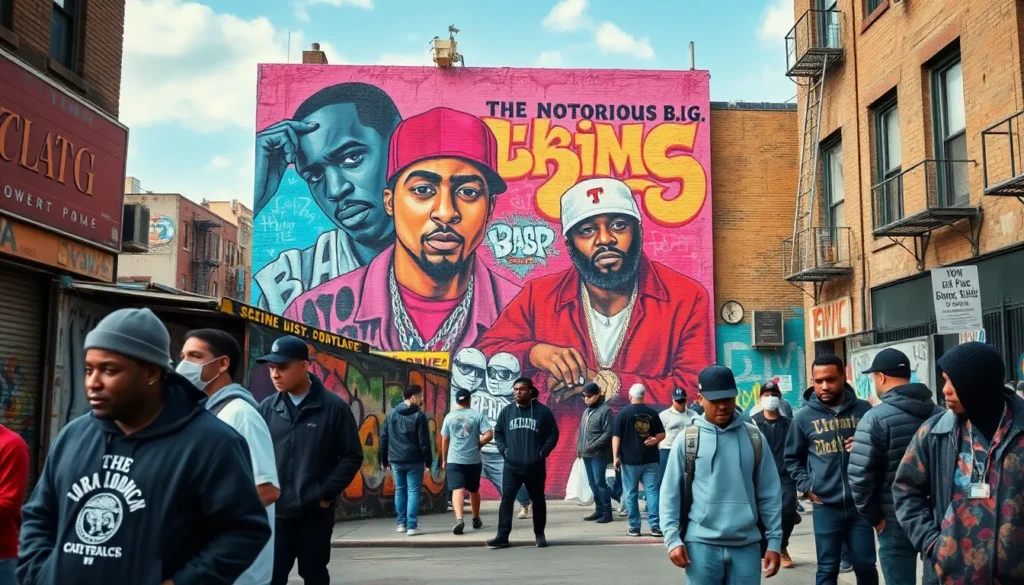Table of Contents
ToggleRap isn’t just music; it’s a cultural phenomenon that’s shaped generations. From the gritty streets of the Bronx to stages worldwide, rap classics have defined the genre and influenced countless artists. These tracks aren’t just songs; they’re anthems that speak to the heart of society’s struggles, triumphs, and everything in between.
Imagine cruising down the street with the windows down, classic beats thumping, and lyrics that make you nod in agreement. That’s the magic of rap classics. They’ve got the power to make you laugh, cry, and even question your life choices—all in a matter of minutes. Buckle up as we dive into the timeless tracks that continue to resonate, proving that some beats never go out of style.
Overview of Rap Classics
Rap classics signify pivotal tracks that shaped hip-hop culture and music. These songs often capture the essence of their time, highlighting social issues and personal struggles. Influential artists like Tupac Shakur, The Notorious B.I.G., and Nas produced works that resonate with listeners across generations. Their lyrical depth and storytelling prowess contribute to the genre’s rich narrative.
Timeless tracks such as “California Love,” “Juicy,” and “N.Y. State of Mind” embody the spirit of rap classics. Each track offers unique perspectives on life, identity, and resistance. Rap classics not only entertain but also provoke thought and inspire change. Listening to these songs evokes emotions, fostering connections between artists and audiences.
Cultural impact remains a hallmark of rap classics. These tracks inspire countless artists and producers, shaping the sound of modern music. The themes explored in rap classics often translate into broader societal conversations. For instance, songs addressing systemic inequality resonate with ongoing movements for justice.
Many argue that understanding rap classics provides insight into the history of hip-hop. Their evolution reflects societal shifts while maintaining authenticity. Rap classics stand as a testament to the power of storytelling and expression.
Legacy plays a crucial role in the classification of these fundamental tracks. The influence of rap classics extends beyond music, impacting fashion, language, and lifestyles. Celebrating these contributions fosters appreciation for the art form and emphasizes its significance in cultural discourse.
Iconic Albums in Rap History

Iconic albums represent the heart of rap music, highlighting its evolution and diverse narratives. These landmark releases showcase extraordinary artistry and cultural significance.
Landmark Releases
“Straight Outta Compton” by N.W.A marked a pivotal moment in rap, bringing West Coast hip-hop to the forefront in 1988. “Ready to Die” from The Notorious B.I.G. followed in 1994, cementing storytelling as a crucial element of rap. “The Chronic,” Dr. Dre’s 1992 debut solo album, introduced G-funk, transforming the sound of hip-hop. Albums like “Illmatic,” released by Nas in 1994, elevated lyricism, emphasizing introspective themes and vivid imagery. “To Pimp a Butterfly” by Kendrick Lamar in 2015 challenged the genre, weaving complex social commentary and musical innovation throughout its tracks.
Influential Artists
Tupac Shakur defined emotional depth in rap, combining personal narratives with social commentary. His powerful delivery and poetic lyricism resonate in classics like “All Eyez on Me.” The Notorious B.I.G. stood out for his smooth flow and storytelling prowess, evidenced in tracks like “Mo Money Mo Problems.” Nas introduced a new era of lyricism, showcasing intricate wordplay in “N.Y. State of Mind.” Kendrick Lamar revolutionized modern rap with thought-provoking themes and innovative sounds, especially in “good kid, m.A.A.d city.” Each artist contributed uniquely, shaping the genre’s trajectory and leaving lasting legacies.
Essential Tracks to Know
Rap classics encompass essential tracks that define the genre’s cultural and musical landscape. These songs have made an indelible mark on listeners and artists alike.
Game-Changing Songs
“Rapper’s Delight” by The Sugarhill Gang launched hip-hop into the mainstream. This track showcased rap as a viable music genre. Another pivotal moment came with “Fight the Power” by Public Enemy, which addressed social issues directly and powerfully. “N.Y. State of Mind” by Nas stands as a storytelling masterpiece. It paints a vivid picture of life in New York City and resonates with authenticity. Each of these songs transcends mere entertainment, providing a voice for the oppressed while shaping the evolution of hip-hop.
Lyrical Prowess and Innovation
Tupac Shakur exemplified lyrical depth with tracks like “Dear Mama,” conveying complex emotions and stories. His ability to articulate personal and societal struggles continues to inspire generations. Nas’s “The Message” featured innovative wordplay, challenging norms and setting new standards for lyricism within rap. Furthermore, Kanye West’s “Jesus Walks” broke boundaries by intertwining faith with hip-hop, highlighting unconventional themes. Each artist consistently pushed the envelope, contributing to the richness of rap’s lyrical landscape and influencing countless others in the genre.
Cultural Impact of Rap Classics
Rap classics significantly influence cultural discussions and artistic expression. They reflect societal struggles and triumphs, resonating deeply with listeners. For generations, tracks like “Fight the Power” by Public Enemy not only address social issues but also ignite conversations surrounding equality and justice.
Artists such as Tupac Shakur and The Notorious B.I.G. used their platforms to shine a light on systemic inequality. Their storytelling abilities connect with audiences, evoking powerful emotions and inspiring change. Each rap classic serves as a cultural touchstone, revealing the evolution of hip-hop while reinforcing its commitment to authenticity.
Fashion and language evolve through the influence of rap classics. Iconic lyrics from Nas in “N.Y. State of Mind” and Tupac’s heartfelt messages in “Dear Mama” permeate everyday interactions, emphasizing the genre’s impact on lifestyle and identity. Many modern artists cite these classics as foundational inspirations for their craft, showcasing the genre’s enduring relevance.
Not only do rap classics shape music, but they also play a crucial role in cultural discourse. Works like N.W.A’s “Straight Outta Compton” and Kendrick Lamar’s “To Pimp a Butterfly” articulate the complexities of urban life, expanding rap’s reach beyond entertainment. Each contribution builds a legacy that helps define hip-hop culture, reflecting broader societal shifts.
Timeless tracks cultivate community and connection. Audiences bond over shared experiences tied to these anthems, reaffirming rap’s power as a medium for understanding and dialogue. Engaging with rap classics reveals their rich history and underscores their ongoing significance in contemporary culture.
Rap classics are more than just music; they’re cultural touchstones that resonate through time. They reflect the struggles and triumphs of society while fostering connections between artists and listeners. The genre’s evolution showcases its power to inspire change and provoke thought.
As iconic tracks continue to influence modern artists and spark discussions on important social issues, their legacy remains vital. Celebrating these classics not only honors the artists who created them but also reinforces rap’s role in shaping cultural conversations. The impact of these timeless anthems will undoubtedly echo in future generations, ensuring that the heart of hip-hop beats on.





